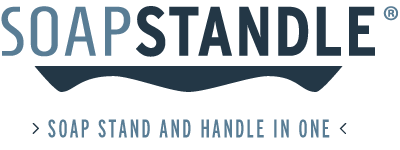
Plot twist! Bar soap, the most mundane item on your vanity, has become the star of the show.
By Jamie Rosen:
My sister is famously discerning when it comes to just about everything. The hangers in her closet are perfectly spaced, every scuff-free shoe stands at attention, and her suitcase is always neatly organized with packing cubes. And there is one thing she never travels without: a Dove Original Beauty Bar. No liquid body wash, no matter how beautifully perfumed or exquisitely packaged, can compare to this pebble-shaped creamy white solid cleanser. It is her dependable companion, her desert island beauty product, her hygienic ideal.
What once seemed a quaint choice feels newly relevant, and not just because we are all now Olympic-level handwashers. Bar soap, long seen as either a utilitarian means to an end or a pretty-but-never-actually-used hostess gift, feels revelatory in an era when we’re focused on reducing waste and self-care minimalism. Want eco-friendly packaging? Bar soap doesn’t need a box, let alone a plastic wrapper. Longevity? It lasts forever, sometimes longer than you want it to (we all know that remaining sliver).
And while old-school bar soaps were made with animal fat and ashes, most are now vegan and made with plant oils and butters. Lafco founder Jon Bresler can opine for hours about the qualities of a fantastic bar of soap. “Properly made bar soap can be used as an all-in-one to clean the body and face, and to shave,” he says. When some companies stopped using animal-derived tallow, he adds, they moved into mass-produced soap bases that cleansed skin so well it was left feeling stripped—which is why many of us might think bar soaps too harsh for daily use. Lafco’s oval bars, in scents like Champagne and Feu de Bois, have gained a devoted following for their nourishing formulation of 75 percent olive oil and 25 percent coconut oil, a combination that Bresler says yields just the right amount of lather and holds just the right amount of scent. A hefty quantity of argan oil is also superfatted into the bars during the hours-long milling process, so skin is moisturized, and a 30-day aging process allows water to naturally evaporate, hardening the bars.
Now there are so many beautifully presented and efficacious soaps to choose from, we’re spoiled for choice. It’s hard to resist the appeal of apothecary classics: Claus Porto’s colorfully wrapped soaps from Portugal, or Santa Maria Novella’s elegant squares. African black soaps, like the best-selling bar from Shea Moisture, are beloved for their skin-clearing properties, thanks to a combination of plantain peel, tamarind extract, and palm ash. Lust-worthy artisanal bars from Flamingo Estate are dyed with indigo and scented with essential oils from Japanese conifers.
And face-specific formulas, like Erno Laszlo’s Sea Mud Deep Cleansing Bar, are known for the elaborate practices that come with them. My best friend from college would fill up her sink with cool water and splash her face 30 times every night before lathering up with her Laszlo soap, a ritual she inherited from her mother.
Annie Kreighbaum, co-founder of the brand Soft Services, is a huge bar soap fan. She picks up local soaps as souvenirs when she travels, and she uses one from the General Pencil Company to clean makeup brushes. Soft Services’ marine blue Buffing Bar for the body is made with microcrystals to help with ingrown hairs and little bumps on the backs of arms and legs, and it has become a social media sensation.
“People order up to 10 sets at a time,” Kreighbaum says. “It feels so good on your skin, you can’t keep it to yourself.” Now that bar soaps are worth bragging about, you don’t have to.

